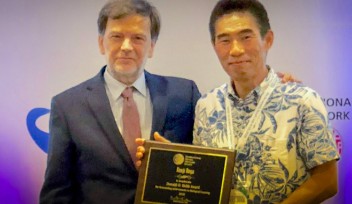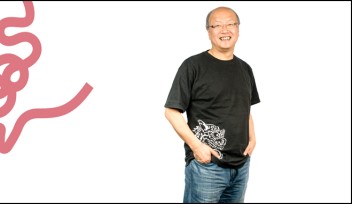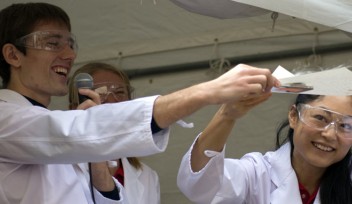OIST Nurse Brings Gleam of Light to Uncertain Futures
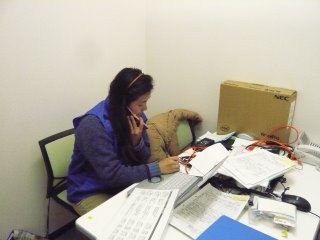
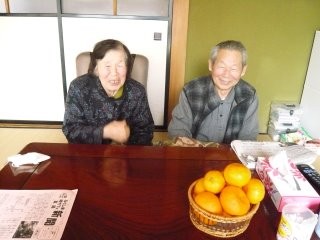
An elderly couple from Tomioka Town
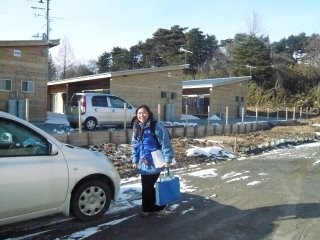
Nomachi, at the Kasetsu
For some of the people displaced by Japan’s March 2011 triple disaster; the Earthquake, tsunami, and nuclear power plant meltdown, their current living arrangements are constant reminders of the catastrophe. Following government-ordered evacuation due to the fear of radiation exposure, residents of Tomioka Town were relocated to neighboring Koriyama City in Fukushima Prefecture. They now live in state-provided temporary housing, Kasetsu or Kariage Juutaku, and rely on the government for subsistence, this populace faces an uncertain future.
“I was usually faced with questions such as: “Will we ever move back to our homes? Will our lives be restored to normalcy? Should we abandon this hope and start rebuilding our lives all over again?” recounts OIST Medical Specialist, Akiyo Nomachi, who took her OIST volunteer leave to help the former residents of Tomioka Town in the first week of February 2012. This leave is set-up to encourage OIST staff to freely give their time to help others.
Nomachi took part in the Japan Clinical Research Unit Volunteer Project, the Kibou to Kizuna, meaning “hope” and “bond” in Japanese. The project, set-up in response to the March 2011 Fukushima disaster, conducts health consultation home visits to families in three towns in the prefecture. Nomachi visited a total of 17 families over a period of five days. “Each day, we started with a visit to the relocated Tomioka Town city hall in Koriyama City where I and other volunteer nurses met a head nurse. We were briefed on each family whom we were going to visit on the day, organized information packs and donations and made phone calls to establish if the families were at home. At the homes, we conducted interviews investigating each family’s immediate needs and concerns, and run a few medical tests; blood pressure, temperature and physical examination. At the end of the day, we returned to the city hall to file reports and debrief the head nurse.”
“Volunteering is not only about helping but learning. I was amazed just how well most of the people handled their adversity,” said Nomachi. “Despite not knowing what lies ahead, the people managed to smile and lighten up, care about others and even share the little food they had. What I take away from this experience is that, sometimes listening, trying to understand and just being with clients can also help. It will take time for things to get back to normal but there is hope!”
For press enquiries:
Press Inquiry Form










